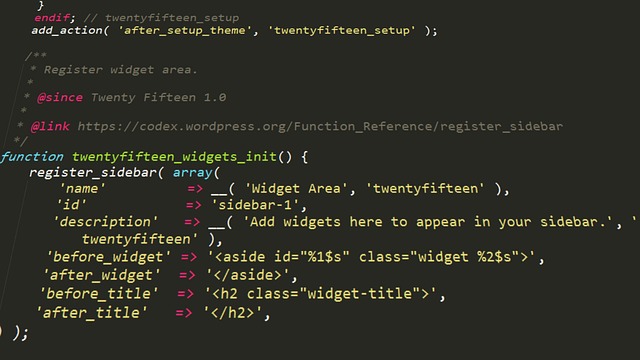Internal linking, enhanced by a semantic anchor text plugin, is crucial for amplifying website SEO performance. This strategy guides search engines through content networks, improving crawlability and indexing. By creating descriptive, contextually relevant link texts, you foster better user experiences and boost website authority. The plugin streamlines the process of generating natural, specific anchor texts, adhering to best practices. It identifies related content, strategically places links, and optimizes for keyword-rich anchor text, leading to improved search engine understanding and higher rankings. Measuring and refining this strategy through plugin insights enhances performance.
In the digital landscape, internal linking is a powerful strategy for enhancing user experience and boosting SEO. This comprehensive guide unveils step-by-step strategies to optimize your site’s structure through effective internal linking. From understanding the impact on search engine rankings to leveraging a semantic anchor text plugin for seamless implementation, learn how to create a harmonious tapestry of links that drive engagement and authority. Discover best practices for crafting compelling link text and measuring the success of your internal linking efforts.
- Understanding Internal Linking and Its Impact on SEO
- The Role of Semantic Anchor Text in Effective Linking
- Identifying Relevant Content for Internal Links
- Crafting Optimal Link Text: Best Practices
- Implementing Internal Links Using a Semantic Anchor Text Plugin
- Measuring and Optimizing Your Internal Link Strategy
Understanding Internal Linking and Its Impact on SEO

Internal linking is a powerful strategy that plays a pivotal role in enhancing your website’s search engine optimization (SEO) performance. It involves creating a network of links within your site’s content, connecting relevant pages to one another. This semantic anchor text plugin approach has a profound impact on how search engines crawl and index your pages, ultimately affecting your site’s visibility and ranking.
By implementing strategic internal linking, you guide search engine crawlers through your website’s information architecture, signaling the importance of certain pages and their related topics. Semantic anchor text tips, such as using descriptive and contextually relevant link text, contribute to semantic anchor text optimization. This ensures that both users and search engines understand the relationships between pages, leading to better SEO outcomes and improved user experience. Effective semantic anchor text SEO practices can significantly boost your website’s authority and relevance in its niche.
The Role of Semantic Anchor Text in Effective Linking

Semantic anchor text plays a pivotal role in effective internal linking strategies. It’s more than just a clickable link; it acts as a bridge between pages, conveying context and relevance to both search engines and users. When crafting semantic anchor text, think beyond simple keywords and aim for phrases that accurately represent the linked content. This not only enhances user experience but also helps search algorithms understand the relationship between pages on your site.
Utilizing a semantic anchor text plugin can be a valuable step in optimizing this process. These tools assist in generating contextually relevant anchor texts, ensuring your internal links are both descriptive and effective. By following semantic anchor text tips, such as keeping phrases natural and specific to the target page, you can improve overall site navigation and boost SEO performance. This strategic approach to semantic anchor text optimization is crucial for creating a cohesive online experience that drives engagement and ranks higher in search results.
Identifying Relevant Content for Internal Links

Identifying relevant content for internal links is a crucial step in any SEO strategy. Using a semantic anchor text plugin can help uncover related pages on your site that carry similar or complementary themes. This tool scans through your existing content, identifies keywords and topics, and suggests linking opportunities based on these insights. By leveraging the power of semantic analysis, you ensure that your internal links are contextually relevant, enhancing user experience and search engine understanding of your website’s structure.
A strategic approach to internal linking involves careful consideration of each link’s purpose and target audience. For instance, a blog post about “SEO Best Practices” could internally link to other articles delving into specific aspects like keyword research, on-page optimization, or backlink building. The semantic anchor text tutorial recommends using descriptive, natural language for your links, which not only aids search engines but also guides readers toward relevant content. This strategic placement of internal links can significantly improve site navigation and boost SEO performance through improved crawlability and user engagement.
Crafting Optimal Link Text: Best Practices

Creating effective link text is a crucial aspect of internal linking strategies. When crafting optimal link text, keep in mind that it should be naturally embedded within the context of your content and accurately convey the destination page’s topic. Avoid generic phrases like “click here” or “read more,” as these fail to provide any semantic value to search engines or users. Instead, use keyword-rich anchor text that accurately describes the target page, making it easier for both users and search algorithms to understand the link’s context.
Utilize a semantic anchor text plugin to assist in this process. These tools help identify relevant keywords and phrases that best represent the content of your linked pages. By implementing semantic anchor text optimization, you can improve the overall SEO of your internal links. This strategy ensures that each link contributes meaningfully to both user experience and search engine rankings. Remember, a well-crafted anchor text is not just about keywords but also providing clear context, making your internal linking structure more robust and beneficial for all users.
Implementing Internal Links Using a Semantic Anchor Text Plugin

Implementing internal links using a Semantic Anchor Text Plugin is a strategic move that enhances your website’s architecture and improves user experience. This type of plugin allows for the automatic generation of anchor texts that are not just keyword-rich but also semantically relevant to the linked content, making navigation more intuitive. By integrating such a tool, you can create contextual links that accurately represent the topic or idea being linked to, thereby boosting SEO efforts through improved clickability and reduced link juice dilution.
A Semantic Anchor Text Plugin offers a seamless way to execute a robust semantic anchor text strategy. This involves optimizing your internal linking by focusing on creating meaningful connections between related pages. The plugin analyzes content and suggests anchor texts that capture the essence of what’s being linked, ensuring both user and search engine clarity. This strategic approach aligns with current SEO best practices, emphasizing quality over quantity when it comes to internal links.
Measuring and Optimizing Your Internal Link Strategy

Measuring and optimizing your internal linking strategy is a crucial step in maximizing its benefits. Utilize SEO tools, such as a semantic anchor text plugin, to analyze your current link profile and identify areas for improvement. These plugins provide insights into the types of anchor texts you’re using, helping you understand if your strategy aligns with best practices. By examining anchor text diversity and distribution, you can ensure that your internal links are not only relevant but also contribute to better search engine understanding of your content.
Regularly assess your site’s internal linking performance through metrics like click-through rates (CTRs) and page view increases post-link updates. A semantic anchor text tutorial or strategy guide can offer valuable insights into creating more effective anchors, ultimately leading to semantic anchor text optimization. This iterative process allows you to refine your approach, ensuring that your internal links not only drive traffic but also enhance user experience and search engine rankings.
